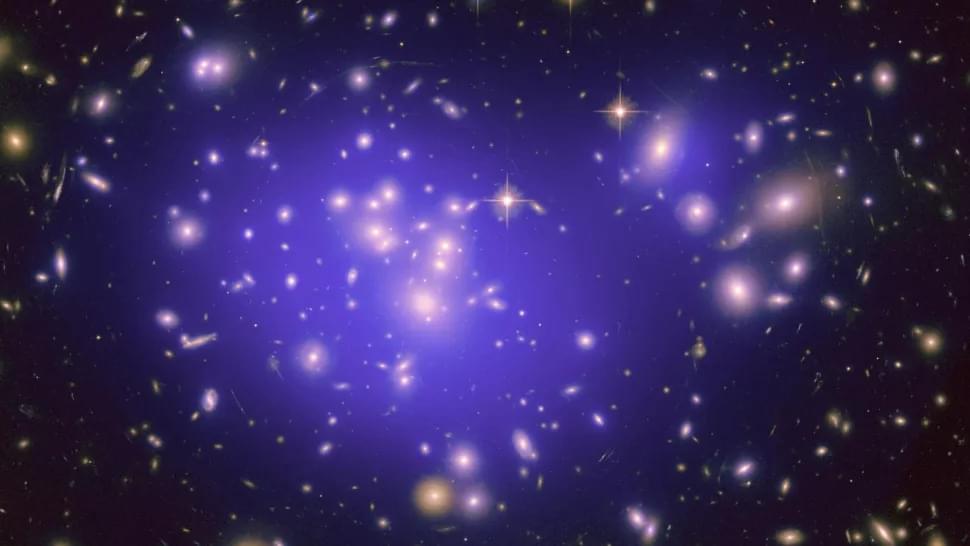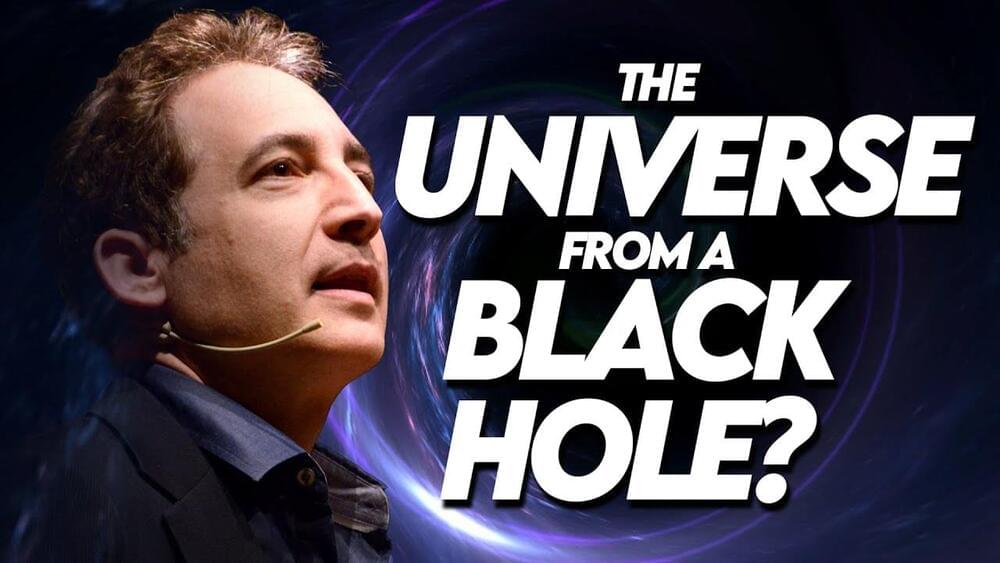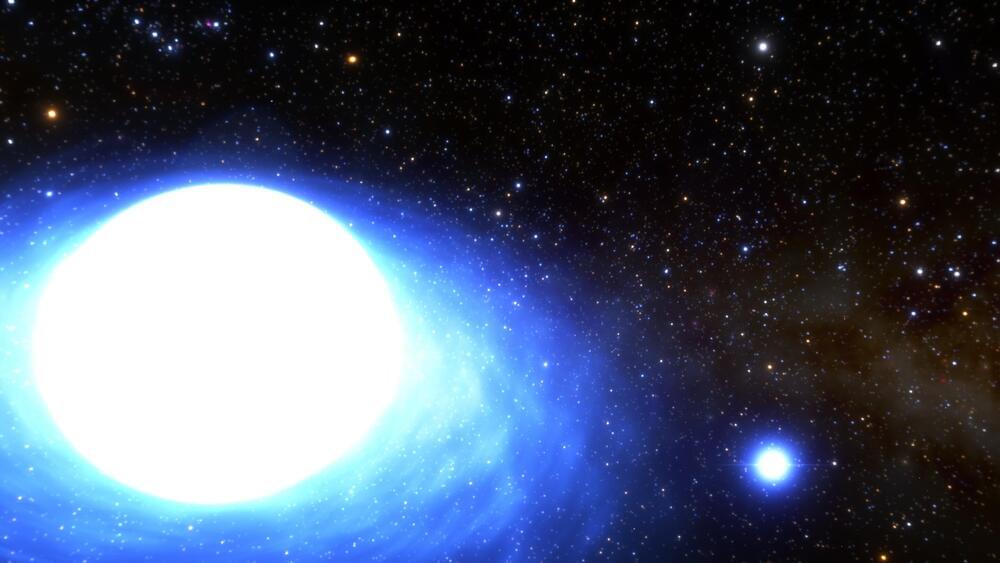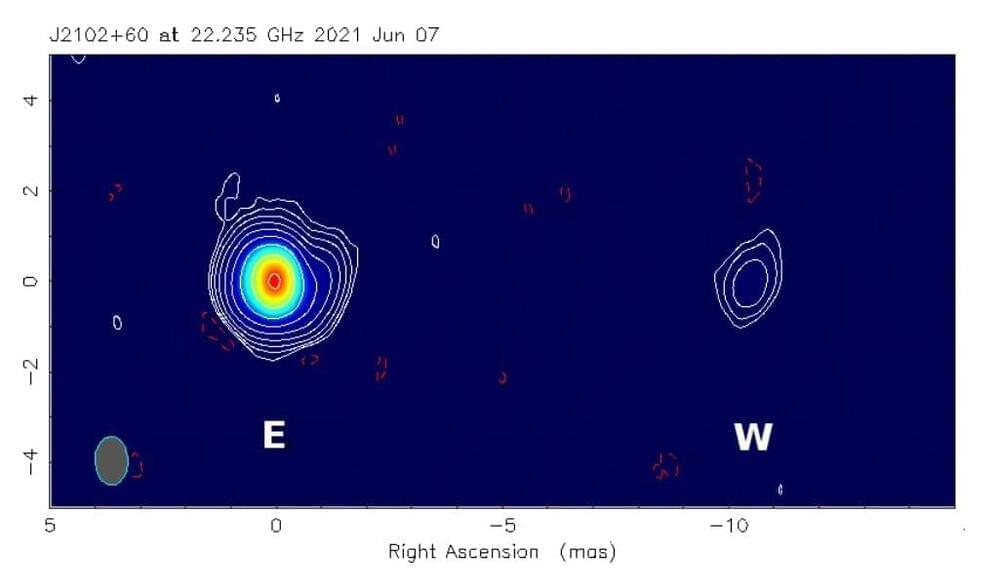Discover how gluons bind quarks together to form protons and neutrons and explore the form weird form of matter in which they existed just after the Big Bang.
Archive for the ‘cosmology’ category: Page 150
Feb 2, 2023
‘Dark Photons’ Potentially Cause Heating Discrepancy in Intergalactic Gas, Research Reveals
Posted by Dan Breeden in category: cosmology

Dark photons, a hypothetical form of dark matter, could explain the heating discrepancy in intergalactic gas. Read on to discover the exciting potential of dark photons in explaining the mysteries of the universe!
Feb 2, 2023
When your supernova’s a dud: Rare binary star features weirdly round orbit, researchers report
Posted by Saúl Morales Rodriguéz in categories: cosmology, physics
After crunching a mountain of astronomy data, Clarissa Pavao, an undergraduate at Embry-Riddle Aeronautical University’s Prescott, Arizona campus, submitted her preliminary analysis. Her mentor’s response was swift and in all-caps: “THERE’S AN ORBIT!” he wrote.
That was when Pavao, a senior space physics major, realized she was about to become a part of something big—a paper in the journal Nature that describes a rare binary star system with uncommon features.
The paper, published on Feb. 1, 2023, and co-authored with Dr. Noel D. Richardson, assistant professor of Physics and Astronomy at Embry-Riddle, describes a twin-star system that is luminous with X-rays and high in mass. Featuring a weirdly circular orbit—an oddity among binaries—the twin system seems to have formed when an exploding star or supernova fizzled out without the usual bang, similar to a dud firecracker.
Feb 2, 2023
The bubbling universe: A previously unknown phase transition in the early universe
Posted by Saúl Morales Rodriguéz in categories: cosmology, particle physics
Think of bringing a pot of water to the boil: As the temperature reaches the boiling point, bubbles form in the water, burst and evaporate as the water boils. This continues until there is no more water changing phase from liquid to steam.
This is roughly the idea of what happened in the very early universe, right after the Big Bang, 13.7 billion years ago.
The idea comes from particle physicists Martin S. Sloth from the Center for Cosmology and Particle Physics Phenomenology at University of Southern Denmark and Florian Niedermann from the Nordic Institute for Theoretical Physics (NORDITA) in Stockholm. Niedermann is a previous postdoc in Sloth’s research group. In this new scientific article, they present an even stronger basis for their idea.
Feb 1, 2023
New map of the universe’s matter reveals a possible hole in our understanding of the cosmos
Posted by Dan Breeden in categories: cosmology, internet, mapping
Scientists have made one of the most precise maps of the universe’s matter, and it shows that something may be missing in our best model of the cosmos.
Created by pooling data from two telescopes that observe different types of light, the new map revealed that the universe is less “clumpy” than previous models predicted — a potential sign that the vast cosmic web that connects galaxies is less understood than scientists thought.
According to our current understanding, the cosmic web is a gigantic network of crisscrossing celestial superhighways paved with hydrogen gas and dark matter. Taking shape in the chaotic aftermath of the Big Bang, the web’s tendrils formed as clumps from the roiling broth of the young universe; where multiple strands of the web intersected, galaxies eventually formed. But the new map, published Jan. 31 as three separate studies in the journal Physical Review D, shows that in many parts of the universe, matter is less clumped together and more evenly spread out than theory predicts it should be.
Feb 1, 2023
Brian Greene — Did The Universe Emerge Inside a Black Hole?
Posted by Dan Breeden in categories: cosmology, quantum physics

The big bang theory explains the beginning of our universe. But could the entirety of our universe be inside a black hole?
Theoretical physicist Brian Greene explains this bizarre hypothesis in cosmology.
The idea that our universe may be entirely contained within a black hole is a mind-bending concept that has been explored by physicists for decades.
Continue reading “Brian Greene — Did The Universe Emerge Inside a Black Hole?” »
Jan 31, 2023
Dr. Eric Bapteste, Ph.D. — CNRS/AIRE — Interactomics For Deeper Understanding Of Aging And Evolution
Posted by Paul Battista in categories: biological, cosmology, evolution

(http://www.evol-net.fr/index.php?option=com_tlpteam&view=team&id=2&Itemid=559) is a Research Director at the French National Centre for Scientific Research (CNRS), the French state research organization and the largest fundamental science agency in Europe.
Dr. Bapteste has both a Ph.D. in evolutionary biology from Pierre and Marie Curie University and a Ph.D. in the philosophy of biology from Pantheon-Sorbonne University.
Jan 29, 2023
Scientists discover what is hidden inside a black hole
Posted by Paul Battista in categories: computing, cosmology, quantum physics
A team of researchers used quantum computing and computer learning to describe what is believed to be the interior of a black hole.
Jan 28, 2023
Astronomers inspect a powerful radio-loud high-redshift quasar
Posted by Dan Breeden in categories: cosmology, evolution
Using the European VLBI Network (EVN), an international team of astronomers has performed high-resolution imaging observations of a powerful and radio-loud high-redshift quasar known as J2102+6015. Results of the observational campaign, presented January 18 on the preprint server arXiv, could help us better understand the nature of this peculiar quasar and other powerful radio sources.
Quasars, or quasi-stellar objects (QSOs), are extremely luminous active galactic nuclei (AGN) containing supermassive central black holes with accretion disks. Their redshifts are measured from the strong spectral lines that dominate their visible and ultraviolet spectra.
Astronomers are especially interested in finding new high-redshift quasars (at redshift higher than 4.5) as they are the most luminous and most distant compact objects in the observable universe. Spectra of such QSOs can be used to estimate the mass of supermassive black holes that constrain the evolution and formation models of quasars. Therefore, high-redshift quasars could serve as a powerful tool to probe the early universe.
Jan 28, 2023
Our Universe is normal! Its biggest anomaly, the CMB cold spot, is now explained
Posted by Dan Breeden in category: cosmology
The Universe is supposed to be the same everywhere and in all directions. So what’s that giant “cold spot” doing out there?














